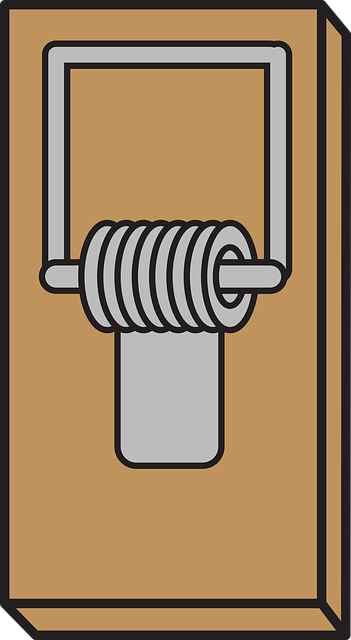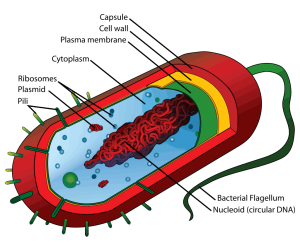How Can You Educate Potential Customers About Your Product?
I Fielded a Marketing Question on Another Forum Recently.
You may not be selling anything related to the product in question, but my answer applies to all businesses. Read on!
Q. ) “How Can I Educate Potential Customers To Buy My Antimicrobial Copper?
“The product is an Antimicrobial Copper coating that can be applied to common household metal surfaces like doorknobs, faucet handles, and toilet flush handles to eliminate germs.”
A. ) What if I Suggested You Were NOT Selling Antimicrobial Copper at All?
Nobody Buys Products. They Buy Value!
 Antimicrobial Copper is a product that NOBODY is looking for. Let me explain.
Antimicrobial Copper is a product that NOBODY is looking for. Let me explain.
Most purchases only ‘look’ like a purchase of a product or service. There is a principle in marketing called “Value Exchange” which explains a purchase decision as a choice to trade value. They choose to get a set of desired benefits in exchange for their money. This principle holds that buyers are willing to trade their hard-earned money for a valuable experience, which happens to include desired benefits in the form of product ownership.
The most powerful realization you can make is that nobody buys products. What people buy is status, health, happiness, safety, freedom from worry, speed, or convenience – among a few other things (in no particular order).
People buy the experience provided by the thing to solve a felt need or perceived problem. They buy the value they get from a product or service, and not the actual product or service. Follow?
In Your Case, the Valuable Experience is Good Health Without Toxic Chemicals
For instance, when somebody buys a riding mower, they are not buying 18 horsepower or a 43″ cutting deck. They are not even really buying a grass cutting machine. What they are buying is extra time on Saturday, and maybe an image to project to the neighbors.
The mowers that offer the most time savings and have a brand that communicates the right thing to the neighbors will likely make the short list.

After that, other things come into play such as price or ego needs. Some people prefer to get a serving of status with every purchase. Others may have an opposite ego need to appear to be frugal. Lots of things go into that final decision.
Here is another example. Nobody really wants to line up to buy a better mousetrap…
In the ‘olden days’ (of the industrial revolution) it was said that if somebody invented a better mousetrap then the world would beat a path to their door. Even if copper made a better metal for use in a mousetrap, for some obscure reason, nobody would care. Buyers are not really going to line up to buy copper mousetraps.
But they might line up to buy “Fewer Mice Faster” or ” A Healthier Home Now” or “A Better Way to Eliminate Disease-Carrying Rodents Faster Than Ever While Saving Time and Money.” See?
So I hope you can see that it is the experience, or the value obtained, that needs to be sold – not the product or its features.
So… Can you see that the biggest marketing mistake most marketers make? It is that they put out product-centric messages instead of customer-centric messages. Engineers and inventors can be the worst because they think marketing means telling the world what they have created!
Companies that think they are in the business of making products are getting beaten in the marketplace left and right by companies that understand they are in the business of creating a customer experience based on the value exchange.
Buyers only give up their money in exchange for something that solves a problem or creates a desirable opportunity. The market leader in every category is the one that presents the most reasonable set of benefits in exchange for the customer’s money (or the company that makes the most compelling argument that they are in fact the most reasonable choice).
When a marketer becomes customer-centric then they know that they need to present ownership of their product as a valuable experience better than all the others. This is called crafting a Value Proposition and is part of overall messaging.
Now We Are “Half Way” To Marketing Instead of Selling!
OK, maybe one fourth of the way there? After All, there are still 4 “P”‘s in marketing. Product, Price, Place, and Promotion All Have To Work Together.
Product and price might seem like relatively self-explanatory ideas.
However, just like people don’t buy products, they also don’t really “pay a price.” Instead, they make a trade to gain a solution. This means if the payoff is greater than the cost then the price is less than $0.00!
Place refers to where people are making purchase decisions, especially for what are called ’Substitute Goods’. Substitute goods might also solve the problem or otherwise provide the value desired. So the best place to present an opportunity for value exchange is probably the place where potential customers are already shopping for substitute goods. This is the time when they are most receptive to choosing a meaningful experience and giving up some cash to get it.
The promotion part happens when somebody communicates the value offered with a message that resonates, and creates some sense of urgency to “act now”. The value proposition has to present the entire “bundles of values.” The message will need to address how one choice (yours) affords more status, or solves the problem faster, or is easier to use, or costs less and works just as well as all the other “Substitute Goods”
So… (I wrote)… I will ask again. What if you were not selling Antimicrobial Copper? Maybe after reading what I wrote above, this time it makes more sense?
Do you see that your market doesn’t want Antimicrobial Copper? For instance, I am sure that very few people are searching Google right now for “Antimicrobial Copper”. But they are probably searching for things related to health and wellness, eliminating germs, or ways to avoid getting sick. They may even be spending more than they have to on other things that are supposed to safeguard their health but don’t work as well as Antimicrobial Copper. See?
Putting All These Marketing Ideas Together.

What if you were selling a valuable health and wellness experience to environmentally conscious consumers who didn’t like using poisons in their house, as an upgrade to something they were already buying that actually costs more and harms the environment at the same time? By saving the cost of those chemicals, for the rest of their lives, your customers will find that this product actually costs less than zero. Instead, it is an investment that will pay dividends for life!
In short, people are already spending plenty of money buying ‘substitute goods’ related to health and wellness when your Antimicrobial Copper actually offers better ownership experience, including a value costing less than $0 – which would clearly be worth trading money for!
When you pitch your valuable user experience opportunity to people already in the business of buying or selling health and wellness then you will find an audience ready to exchange money for the health benefit value experience that you offer. You just need to find them when they are in the throes of making a purchase decision.
Parting Thought:
What if you pursued select retail or distribution channels where those people were already spending their money… such as health food stores, medical equipment rental companies, bathroom remodelers (especially those in the business of replacing bathtubs with showers or walk-in tubs to seniors who are more germ averse than younger buyers). These are just a few ideas. I hope this has helped get you thinking in a new way that might be more successful than what you have been trying 🙂
Learn More About Marketing at www.BigMarketingSolutions.com


Recent Comments